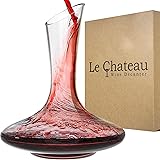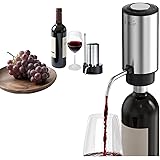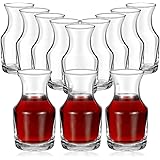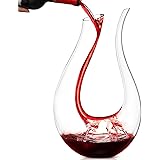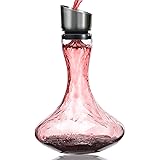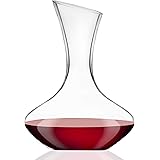We’ve all been there. You order a lovely glass of wine at a restaurant, it arrives, and you might find yourself thinking, “Is that all?” The glass looks half-empty, maybe even less, and a tiny pang of disappointment might hit. It’s a very common feeling, and if you’ve experienced it, you’re certainly not alone!
The video above perfectly highlights this common misconception. Many people assume a “glass of wine” means filling it to the very top. However, as our expert explains, there’s a very good reason why your wine glass isn’t brimmed to the top.
How Much Wine in a Glass? Unpacking the Standard Pour
The amount of wine served in a glass is a topic often misunderstood by those new to wine appreciation. It’s not about being stingy; it’s about enhancing your overall wine experience.
Let’s dive deeper into why the standard pour is what it is, and how it actually benefits you.
The Art and Science Behind the Wine Pour
When you see a wine glass that’s only filled about one-third of the way, as mentioned in the video, it’s not an accident. This practice is rooted in centuries of wine culture and sensory science.
1. Unleashing the Aromas
One of the primary reasons for not overfilling a wine glass is to allow the wine’s complex aromas to develop and concentrate. Imagine if you poured a beautiful, fragrant perfume into a tiny, narrow container with no room for the scent to escape; you wouldn’t get the full experience.
Similarly, the empty space above the wine, known as the “headspace,” acts as an echo chamber for the wine’s volatile aromatic compounds. These are the smells that make each wine unique, from fruity and floral notes to earthy and spicy undertones.
2. The Importance of Swirling (Aeration)
Another crucial factor is the ability to swirl the wine. If a glass were filled to the top, swirling would be impossible without spilling. Swirling introduces oxygen to the wine, a process called aeration.
This gentle exposure to air helps to “open up” the wine, softening tannins and releasing even more subtle aromas that might otherwise remain hidden. It’s like letting a sleeping giant awaken and reveal its true character.
3. Maintaining Optimal Temperature
While often overlooked, the unfilled portion of the glass also helps in maintaining the wine’s serving temperature. When you hold a wine glass, your hand naturally warms the stem or bowl.
Having less liquid in the glass means your body heat has less impact on the overall temperature of the wine, especially crucial for white and sparkling wines that are best enjoyed chilled.
The Standard Wine Serving Size: 150 ml (Approximately 5 Ounces)
As the video clearly states, if you order a glass of wine, you should generally expect about 150 ml. This amount, roughly equivalent to 5 fluid ounces, is considered the global standard for a single serving of wine.
Why 150 ml? This quantity is widely adopted for several practical reasons. Firstly, it’s a consistent measurement that allows for standardized pricing and helps consumers manage their alcohol intake.
Secondly, a typical 750 ml bottle of wine, which is the most common size, yields exactly five 150 ml pours. This standardization makes it easy for restaurants and bars to manage inventory and ensures fairness for patrons.
Understanding Wine Glass Capacities vs. Pour Sizes
The video points out that wine glasses can have vastly different capacities—from the 450 ml glass shown to even larger ones, like 900 ml. It’s crucial to understand that the capacity of the glass does not dictate the amount of wine poured into it.
A larger glass is designed to enhance the experience, not to hold more wine for a single serving. Imagine if you poured a small amount of water into a large, elegant fishbowl; the bowl’s size is for the fish’s comfort, not to fill it with water to the brim.
Different Glasses, Same Standard Pour
Different wine varietals often benefit from specific glass shapes. For example, a Bordeaux glass is tall with a broad bowl, designed to direct robust red wine to the back of the palate.
A Burgundy glass, with its even wider bowl, is perfect for delicate, aromatic reds like Pinot Noir, allowing their complex scents to gather. Despite these shape differences and varying overall capacities, the standard pour of 150 ml remains consistent.
Maximizing Your Wine Experience with a Proper Pour
Now that you understand the “why” behind the standard wine pour, you can approach your next glass with a newfound appreciation. That seemingly “empty” space is actually full of potential, allowing the wine to truly express itself.
Here’s how this knowledge can enhance your enjoyment:
- Engage Your Senses: Take a moment to look at the wine’s color and clarity. Then, gently swirl the glass to release those hidden aromas before taking your first sip.
- Mindful Enjoyment: A standard pour encourages you to savor each sip, rather than rush through a large quantity. This allows for a more contemplative and enjoyable experience.
- Empowered Dining: The next time you’re at a restaurant and a glass of wine arrives with plenty of headspace, you’ll know it’s a sign of a professional establishment respecting the wine and your experience.
Understanding the standard amount of wine in a glass isn’t just about measurement; it’s about unlocking the full potential of your drink. So, next time you lift your glass, remember that the empty space is as important as the wine itself in creating a truly memorable experience.


